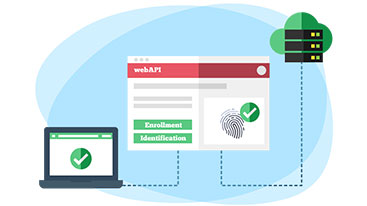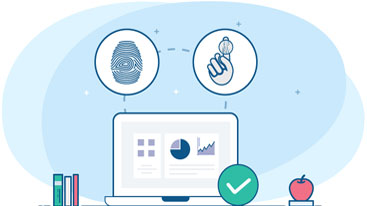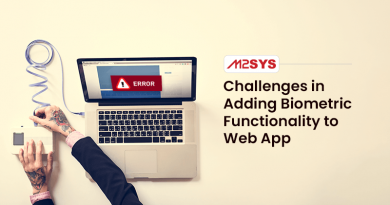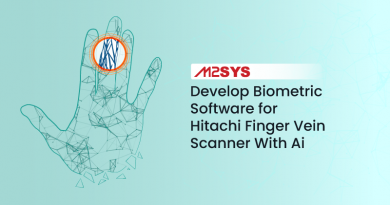3 Ways of Biometric Authentication in Web Application
Common queries among developers often raise that if there is any way for biometric authentication in a web application. Yes, there are several ways and those are easy and simple too. You can do it in different ways as per your requirements, applications, budget, and expertise.
Let’s talk about the common solutions of biometric authentication in web applications.
- Cloud Solutions:
The cloud solution is the most advanced and latest way to use biometric authentication in web applications. CloudABIS, a cloud-based biometric system that will allow you to complete this process in a few hours with an easy to use API.
“CloudABIS™: Scalable, Cloud-Based Biometric Matching System”
It is simple to implement, just need to connect through the CloudABIS API for biometric enrollment and matching service with the host application. Also, this software eliminates the need for ActiveX controls you would like to bypass.
It has four simple steps that include authentication, registration, identification, and verification.
Benefits of using CloudABIS:
- Integrate within a few hours with an easy to use API
- Affordable, straightforward SaaS pricing model
- No ActiveX or Plugin required.
- CloudABIS™ simplifies your model, provides freedom, and removes the friction from your implementation
- Biometric SDK:
You can also use biometric authentication system in web application through biometric SDK. Bio-Plugin, a software development kit for rapid biometric integration, will help you to complete the job.
Bio-Plugin is a revolutionary biometric SDK solution that will allow you to easily authenticate your biometrics in a web application. It supports both Windows and Web-based applications.
“Bio-Plugin™ is a biometric SDK alternative that can be seamlessly integrated into any Windows or Web software in just a few hours, eliminating difficult development work and support challenges.”
This software supports all major biometric modalities including fingerprint, finger vein, iris and facial recognition. So, you aren’t locked in a single biometric authentication system and have the opportunity to deploy any of these biometric modalities.
This software allows you to host this application within your own database. It also supports third-party biometric capture programs if that supports ISO or ICS templates.
Key Benefits of BioPlugin:
- Integrate a complete biometric solution within a few hours
- Eliminate burdensome internal development and ongoing support requirements
- Includes biometric verification (1:1) and robust identification (1: N) capability
- Interfaces with a Hybrid Biometric Platform™
- Simple, affordable licensing model
- Instant Integration:
If you think that the above solutions are complex for you and you need a simpler solution that doesn’t need higher level coding skill, BioSnapOn is the solution that meets your needs. It will allow you to instantly authenticate your biometric solution with any windows or web application.
“Bio-SnapOn™ Effortless Biometric Software Integration….. Without the SDK”
BioSnapOn works in three simple steps:
- Just install the BioSnapON and scan your fingerprint three times consecutively. Then, your fingerprint data will be stored in a fingerprint template.
- When the enrolment process will be done, you need to scan a single fingerprint to be identified on the system.
- Then, the BioSnapON engine matches the print and sends the associated credential to the host software. The host software then performs the appropriate action, such as clocking the user in or out.
Key benefits of BioSnapOn:
- You can do it without high-end code level knowledge.
- It supports all major browsers including Internet Explorer, Mozilla Firefox, Google Chrome, Safari browsers.
- Identify members at check-in, instantly retrieving their picture and information from the management software.
These are the most affordable, easy and simple to integrate biometric authentication in web application system. If you need further assistance, don’t hesitate to contact us. Thank you.
















Using a stored picture or template of a user’s biometric data (fingerprints, face, iris, etc.), cloud-based biometric solutions may verify a user’s identity and enable them access to restricted resources. A user’s biometric traits, whether they be few or many, are entered as templates on the cloud’s server after registration. One of the best things about cloud-based biometrics is that it protects the user’s fingerprint templates and photos using encryption.
This seems way more easier then going through the hassle of integration. Thanks M2SYS for sharing this article. Now all I need is a biometric device, preferably a fingerprint one and subscribe to CloudABIS to get stared.
Thanks M2SYS for providing a convenient and secure way to access our web application. I would also like to add that the biometric data is collected and stored in a secure manner by M2SYS to protect the privacy of our users.
There is no doubt that cloud biometrics platforms like CloudABIS is the best way to add biometrics capabilities to any web application. I am using it and I do not have any complaints so far.